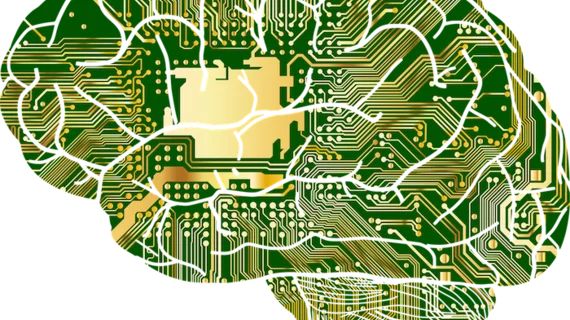8 key clinical applications of machine learning in radiology
Artificial intelligence (AI) and machine learning often get lumped together, but as the authors of a new Radiology commentary explained, the two terms are far from interchangeable. While machine learning is a specific field of data science that gives computers the ability to “learn” without being programmed with specific rules, AI is a more comprehensive term used to describe computers performing intelligent functions such as problem solving, planning, language processing and, yes, “learning.”
“Machine learning is one type of artificial intelligence,” wrote lead author Gary Choy, MD, department of radiology at Massachusetts General Hospital in Boston, and colleagues. “For example, rule-based algorithms, such as computer-aided diagnosis used for several years in mammography, represent a type of artificial intelligence but not a type of machine learning. Computer-aided diagnosis is, however, a broader term and may incorporate machine learning approaches. By definition, machine learning algorithms improve automatically through experience and are not rule based.”
With that clarification in place, the authors examined the future of machine learning and described numerous clinical applications of machine learning in radiology. These are eight of those applications:
1. Order scheduling and patient screening
One big way radiologists can provide additional value is by helping reduce the number of patient no-shows. Researchers are already working on using machine learning to identify patients who are at a high risk of missing their radiology care or not attending appointments, the authors explained. These technologies also have potential to help improve patient screening.
2. Image acquisition
Both imaging providers and patients have a lot to gain from this one; it could mean more efficiency and quicker exam times.
“Machine learning could make imaging systems intelligent,” the authors wrote. “Machine learning–based data processing methods have the potential to decrease imaging time. Further, intelligent imaging systems could reduce unnecessary imaging, improve positioning, and help improve characterization of the findings.”
3. Automated detection of findings
Choy and colleagues noted that this is one way machine learning can make an impact in radiology right away. Machine learning can extract incidental findings, for example, and it can help detect critical findings as well.
Other areas that could take advantage of machine learning in the future are breast cancer screening and the detection and management of pulmonary nodules. And that’s just the beginning.
“Bone age analysis and automated determination of anatomic age based on medical imaging holds considerable utility for pediatric radiology and endocrinology,” the authors added.
4. Automated interpretation of findings
Interpreting findings is one area that often gets mentioned in debates about whether these technologies will replace radiologists altogether. As the authors noted, the interpretation of detected findings “requires a high level of expert knowledge, experience and clinical judgement based on each clinical case scenario.”
Many thought leaders in this area have suggested that instead of replacing radiologists, these technologies are tools to be used by radiologists to improve the quality of their interpretations. The authors supported this line of thinking as they explored the ways machine learning can improve radiologist interpretations.
“Feature extraction from breast MRI by machine learning could improve interpretation of findings for breast cancer diagnosis,” they wrote. “A machine-learning method based on radiologic traits (semantic features such as contour, texture, and margin) of the incidental pulmonary nodules has been shown to improve accuracy of cancer prediction and diagnostic interpretation of pulmonary nodules.”
5. Postprocessing: image segmentation, registration, quantification
Research has shown how machine learning can be used for image segmentation, Choy and colleagues observed. It also has potential to assist radiologists with image synthesis, image registration and image quantification. On example of this is a recent study from Wang et al. published in Computer Methods and Programs in Biomedicine that used a convolutional neural network-based algorithm to segment adipose tissue volume on CT images.
6. Image quality analytics
Image quality means everything in radiology, and machine learning could make an impact in this area as well.
“Trained human observers (e.g., experienced radiologists) are considered to be the reference for task-based evaluation of medical image quality,” the authors wrote. “However, a long time is required to evaluate a large number of images. To address this problem, machine learning numerical observers (also known as model observers) have been developed as a surrogate for human observers for image quality assessment.”
7. Automated radiation dose estimation
Machine learning algorithms could help radiologists and technologists with making dose estimates before exams, the authors noted. This comes at a time when exposing patients to the lowest dose possible is more of a focus in medical imaging than ever before.
8. Radiology reporting and analytics
By applying machine learning techniques to natural language processing, researchers can extract data from free-text radiology reports, extra findings and measurements from narrative radiology reports and even track recommendations made by radiologists to referring physicians.
The full Radiology study also addressed key challenges facing the implementation of machine learning in radiology and how these technologies can “help personalize healthcare further.”

